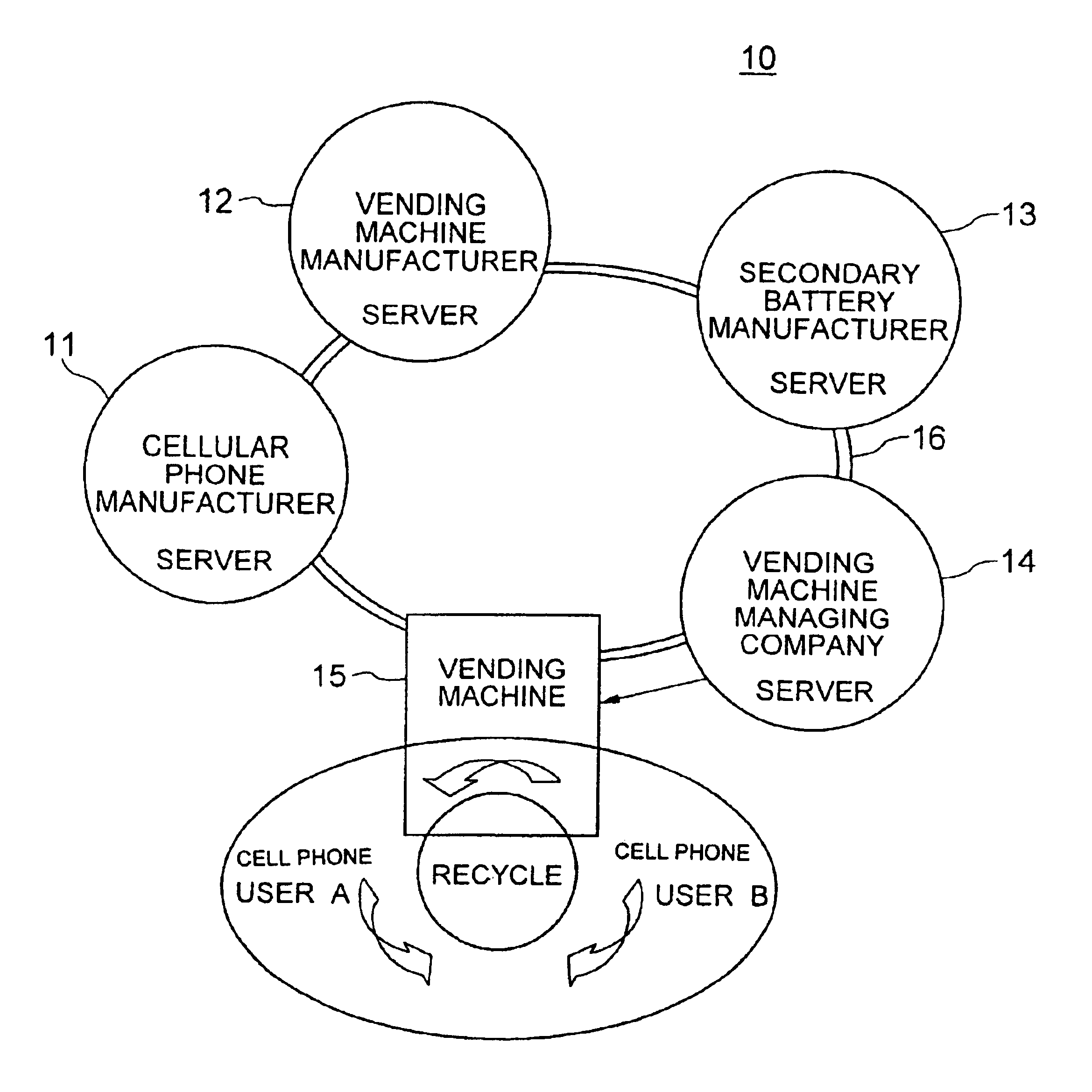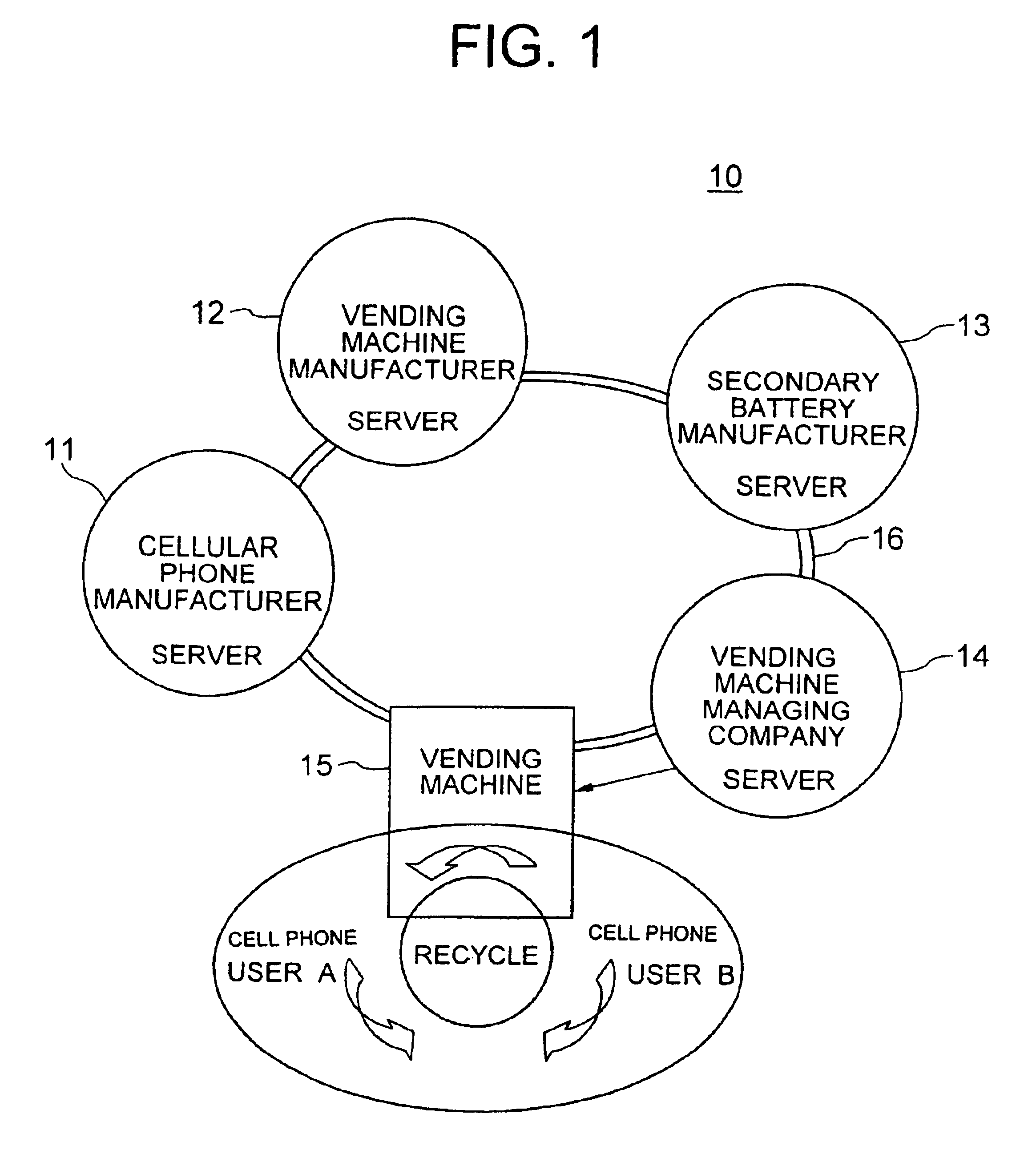Battery recycle system
a recycling system and battery technology, applied in the direction of electric vehicles, data processing applications, buying/selling/leasing transactions, etc., can solve the problems of reducing operating time, long operating time, and repeated charging and discharge of secondary batteries in cellular phones
- Summary
- Abstract
- Description
- Claims
- Application Information
AI Technical Summary
Problems solved by technology
Method used
Image
Examples
Embodiment Construction
Now, the present invention is more specifically described with reference to accompanying drawings. Referring to FIG. 1, a battery recycle system, generally designated by numeral 10, according to an embodiment of the present invention includes a server 11 owned by a cellular phone manufacturer, a server 12 owned by a vending machine manufacturer, a server 13 owned by a secondary battery manufacturer, and a server 14 owned by a vending machine managing company, which are interconnected through a telecommunication network 16 such as the internet. The battery recycle system further includes a plurality of vending machines 15 connected through the telecommunication system to the servers 11 to 14.
The secondary battery manufacturer supplies secondary batteries to the cellular phone manufacturer. The cellular phone manufacturer delivers information of the secondary batteries such as model number, dimensions and specification thereof. The vending machine manufacturer manufactures the vending...
PUM
| Property | Measurement | Unit |
|---|---|---|
| dimensions | aaaaa | aaaaa |
| charge | aaaaa | aaaaa |
| power | aaaaa | aaaaa |
Abstract
Description
Claims
Application Information
 Login to View More
Login to View More - R&D
- Intellectual Property
- Life Sciences
- Materials
- Tech Scout
- Unparalleled Data Quality
- Higher Quality Content
- 60% Fewer Hallucinations
Browse by: Latest US Patents, China's latest patents, Technical Efficacy Thesaurus, Application Domain, Technology Topic, Popular Technical Reports.
© 2025 PatSnap. All rights reserved.Legal|Privacy policy|Modern Slavery Act Transparency Statement|Sitemap|About US| Contact US: help@patsnap.com



